Pros
-
4K resolution and HDR support
-
Quantum-dot technology
-
Includes the OneConnect box
Cons
-
Poor off-angle viewing
The Q8 series is available in three sizes, and starts around $2,000 for the 55-inch. That's similar pricing to LG's 55-inch C8 OLED, and it's clear that Samsung hopes for its QLED line to exist in a similarly premium sphere as LG's 2018 OLED TVs.
Replete with advanced TV tech like 4K resolution, HDR compatibility, and "quantum dot" enhanced brightness and color, the Q8 is no slouch. For what you're paying, this is an extremely bright, colorful, and highly polished TV that will be especially attractive if you're excited about HDR.
About the Q8 Series
{{ amazon name="Samsung 55-inch Q8", asin="B07B5FR99H", align="right" }}
Samsung's Q8 series is available in three screen sizes:
- 55-inch (QN55Q8FN), $2,000
- 65-inch (QN65Q8FN), $3,000
- 75-inch (QN75Q8FN), $4,000
Other than their size, the three flat Q8 TVs are identical (I say flat because there's a curved variant called the Q8C).
While none of them are "cheap," they're priced fairly for the rather extensive smorgasbord of features and picture quality enhancements that come with each one.
Here are the core specs of the Q8 lineup:
- 4K Resolution (3,840 x 2,160)
- High Dynamic Range (HDR10/HDR10+)
- Samsung Smart Hub
- Full-array Local Dimming LED Backlight
- Quantum Dot Color
- OneRemote
We received our 55-inch Q8 sample unit on loan from Samsung, giving it roughly 24 hours of run time before testing and evaluating it.

Overall, the Q8's design emphasizes minimalism and polish. Despite having a full-array backlight, it's lightweight and compact.
What We Like
Wonderfully minimalist design
If there's one thing Samsung does well year-over-year, it's produce some of the most attractive TVs on the market. The Q8 may have full-array backlighting—which makes it thicker than an edge-lit TV—but it's still compact and highly polished.
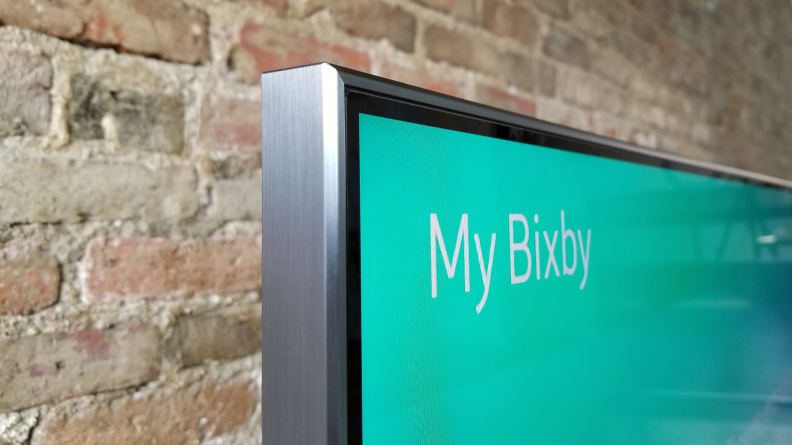
The perimeter bezels, screen edges, and rear chassis are an almost seamless sweep of high-quality black plastic, rendering the TV both sturdy and lightweight at the same time—I was able to unbox, assemble, and heft the TV about on my own.

The smooth rear chassis and wide-set feet make for a very handsome product. No screws are required for assembly.
Two wide-set feet slide into the body without any screws whatsoever, making assembly a breeze. The right foot also has a guide path for the power cable—a nice touch.
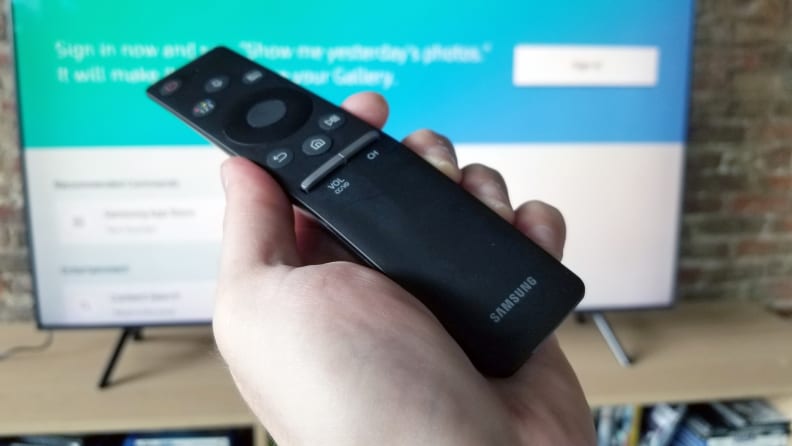
The OneRemote adds to the minimalism on display here. On the back, right-hand side of the TV, you'll find all the TV's AV ports, which include multiple HDMI and USB ports.
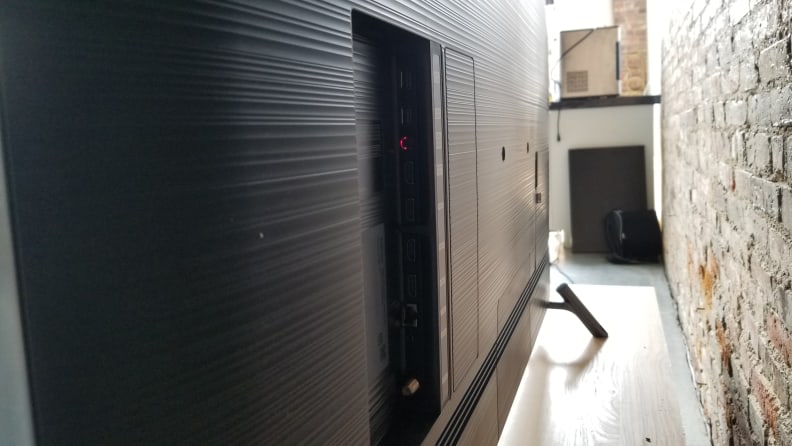
Dazzling picture quality
The first thing most people will notice about the Q8? This thing is bright. Heckin' get you some sunglasses, fam. The Q8 has great contrast outside of HDR mode, too, but in HDR it really pours out the light.
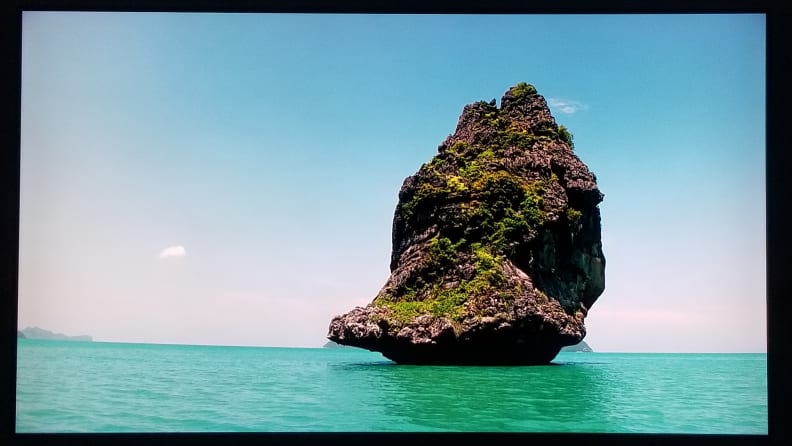
Overall, the Q8 delivers excellent picture quality thanks to its sheer brightness and color volume.
Likewise, this brightness makes for rich, well-saturated colors. While Movie mode (in SDR and HDR) can be perfected via a little calibration at home, it's accurate enough to please the majority of viewers.

Movie mode is the most accurate viewing mode, and renders content in a good mix of realistic balance and vivid celebration.
I watched content on Netflix and YouTube, as well as 4K/HDR Blu-rays, and (in Movie mode) never noticed any overt issues in terms of motion performance. The TV's 120 Hz panel and adjustable de-blue/de-judder ensure smooth playback in most circumstances.
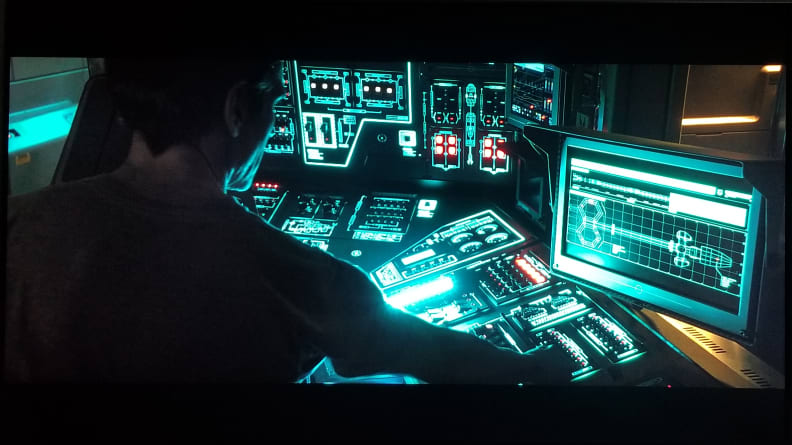
The Q8's major claim to fame is how bright it gets. The central specular in this photo is an example. In HDR mode, the TV achieves almost 1,500 nits of brightness.
Naturally, 1080p content upscales to the TV's native 4K resolution well. You may have to fiddle with the Sharpness control to get sub-1080p content looking the way you want, but overall, upscaling is handled intelligently.

While 4K and HDR content looks best, the Q8 does a good job upscaling 1080p and 720p content too.
Last, thanks to the TV's "HDR+" feature, you don't have to have an HDR-capable game console or content to enjoy all of the brightness/color on display here.

The TV's "HDR+" mode gives any content a brighter, more colorful HDR look. The original image is on the left, and HDR+ is on the right. Notice it is sharper, a bit blue-er, and brighter.
This mode takes any content and pushes it intelligently into the TV's HDR display territory, which is an awesome way to feel like you're getting the most out of your fancy new QLED TV.
Slick features & extras
One feature that's really cool on the Q8 is the new "Ambient Mode." It's an "on but not on" setting for the TV that allows it to display an unobtrusive wallpaper (like the ocean or mountains) while in low-power mode. You can upload your own images, too.
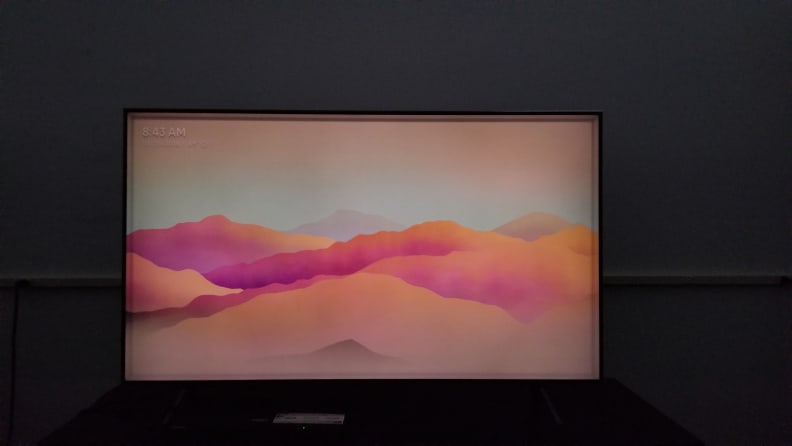
Ambient Mode is a new feature that turns the TV into an artistic presence while the screen is off. This image, "Mountains," is included, but you can also upload your own photos.
The menu interface and smart features are rendered with the same minimalist flair as the TV's design and remote. There are ample picture quality controls, but the basics—ambient mode, picture/sound mode, and apps like Netflix and Hulu—are arranged in a horizontal box along the bottom of the screen, keeping the content in the spotlight.
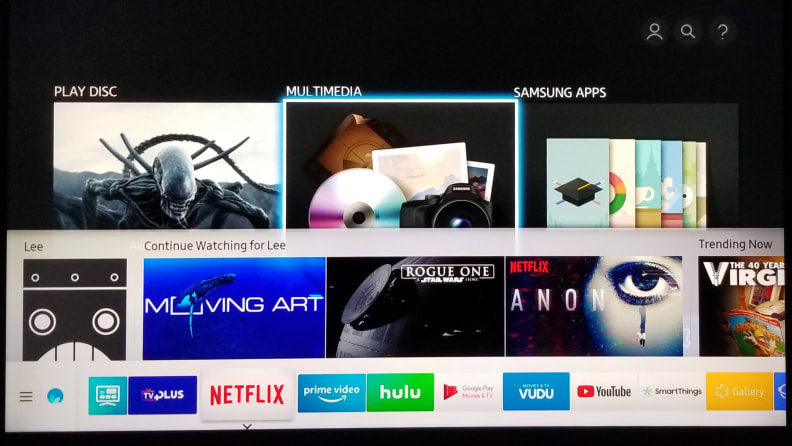
The smart features are as minimalist and easy to grapple with as the TV's design, and HDMI device sensing is still top notch.
Finally, I always appreciate how smoothly Samsung's HDMI identification works. While it still doesn't recognize our esoteric signal generator, it immediately synced up with the Blu-ray player, and I was able to control that device with the TV's remote.
Relevant Data (Movie mode)
- SDR Contrast: 207.7 / 0.05 nits
- SDR Gamut Coverage: 95%
- HDR Contrast: 569.5 / 0.1 nits
- HDR Benchmarks: 2%-98.09 / 10%-309 / 20%-1125 / 40%-1477 / 50%-1472 nits
- HDR Gamut Coverage: 97%
To see our CalMan charts for SDR and HDR tests, check out the Science Page.
What We Don't Like
Bad viewing angles
There's no way around it: the Q8 doesn't have very good vertical or horizontal off-angle viewing. It looks great head-on, but you'll start seeing flashlighting and light bleed in shadowy areas once you're off center.

The TV's horizontal viewing angles are not great. Moving off center brightens shadows and begins to wash out parts of the screen. It's still satisfactory, but not ideal for wall mounting.
It isn't horrible, but picky viewers may take some issue. I suspect this issue is similar on the 65-inch Q8, which prospective wall-mounters should definitely keep in mind.
Inconsistent black levels
Both the 55- and 65-inch Q8 TVs have full-array local dimming, which is why they look so good (and are a bit pricy). While this is a boon to content 90% of the time, sometimes it acts strangely.
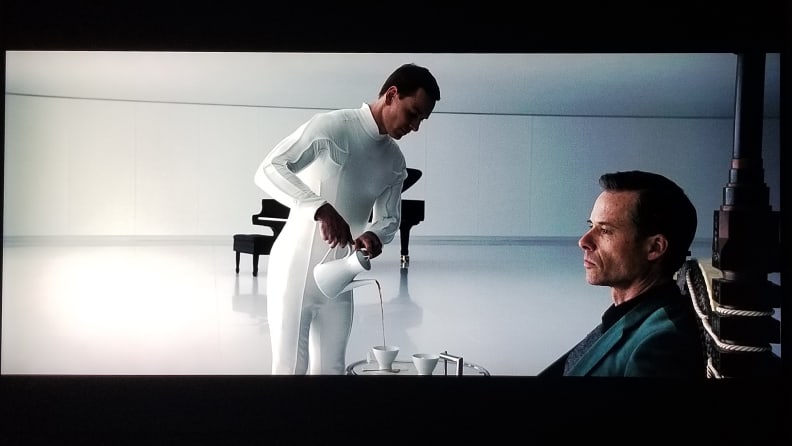
Occasionally, the local dimming algorithm creates a bit of "black crush," making darker areas a little darker than they ought to be.
Essentially, there is some occasional "stair stepping" between levels of dimming, depending on content. This can make for shadowy areas that look a little darker than they should, as the TV errs on the side of reining in brightness.
HDR is better for bright rooms
The Q8 is an excellent HDR TV (thanks, quantum dots!), but it's not environment agnostic. Even in Movie mode, it's so bright that it can't produce very dark black levels.
This means in normal or bright lighting, it looks great, but if you're watching it in a very dim or dark room you may find even Movie mode needs to be turned down. The TV has an ambient light sensor, but I wouldn't personally leave it up to chance.
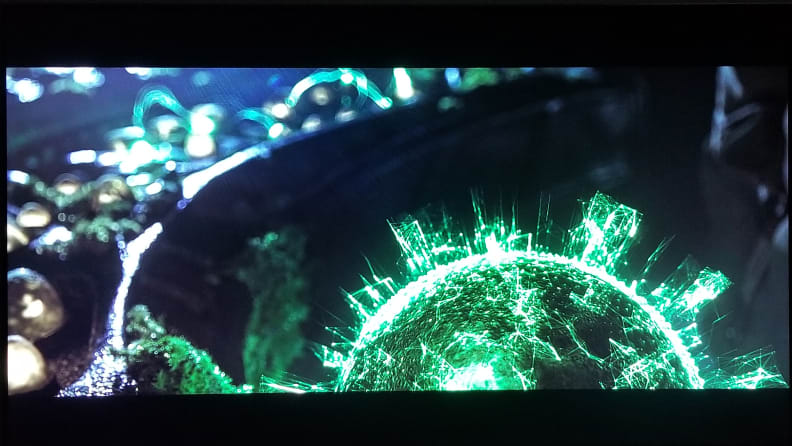
The Q8 looks good most of the time, but really shines while playing the latest 4K/HDR Blu-ray content.
Relevant Data (Movie mode)
- Horizontal Viewing Angle: 19.82% / ±9.91°
- HDR Black Levels: 10%-0.11 / 90%-0.055 nits
To see our CalMan charts for SDR and HDR tests, check out the Science Page.
Should You Buy It?
Yes—especially if you want a premium bright-room experience
At $2,000, the 55-inch Q8 is a bit expensive, but ultimately it's priced more fairly than not. The design, features, and picture quality are all top-notch, and only extremely picky viewers will take any issue here.
What you're paying for here is the Q8's sheer brightness and color volume, alongside the minimalist aesthetic. The 55-inch Q8 is over $1,000 more expensive than the 55-inch TCL 6 Series right now, but it's also over twice as bright and more colorful. The two aren't really in the same class at all where HDR is concerned.
If this is your price range, you could also check out the LG's 55-inch C8 OLED ($2,500), which we expect to perform as well as the 2017 C7 model, our top-rated TV from last year. However, if your TV room has lots of windows or lights, I still recommend the Q8 over an OLED.
If it were me, I might wait until later this year for a price drop—but you can go ahead and pick up some sunglasses now.
CalMan Charts - SDR
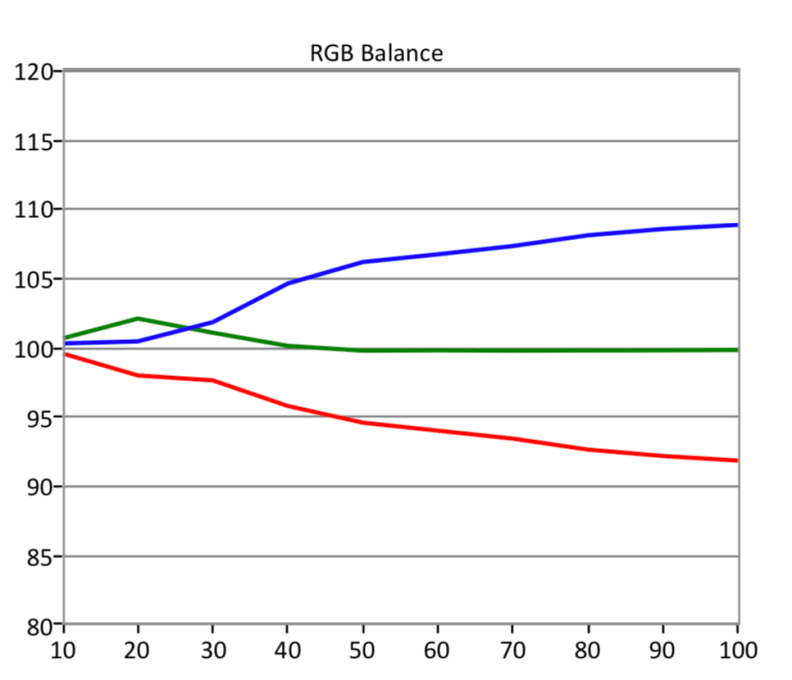
Samsung Q8 SDR RGB
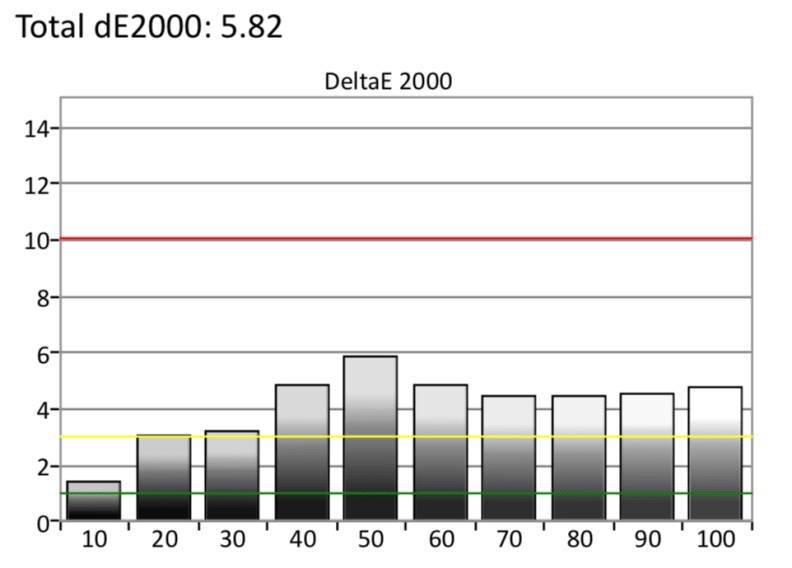
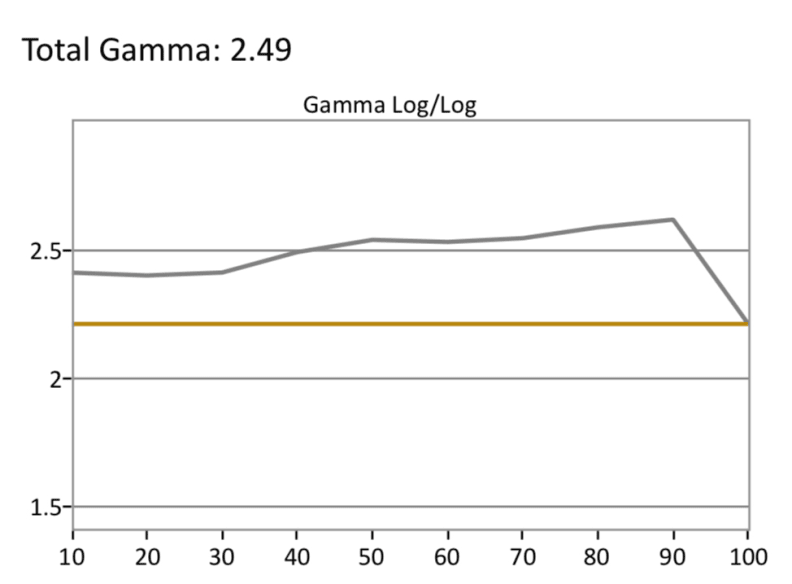
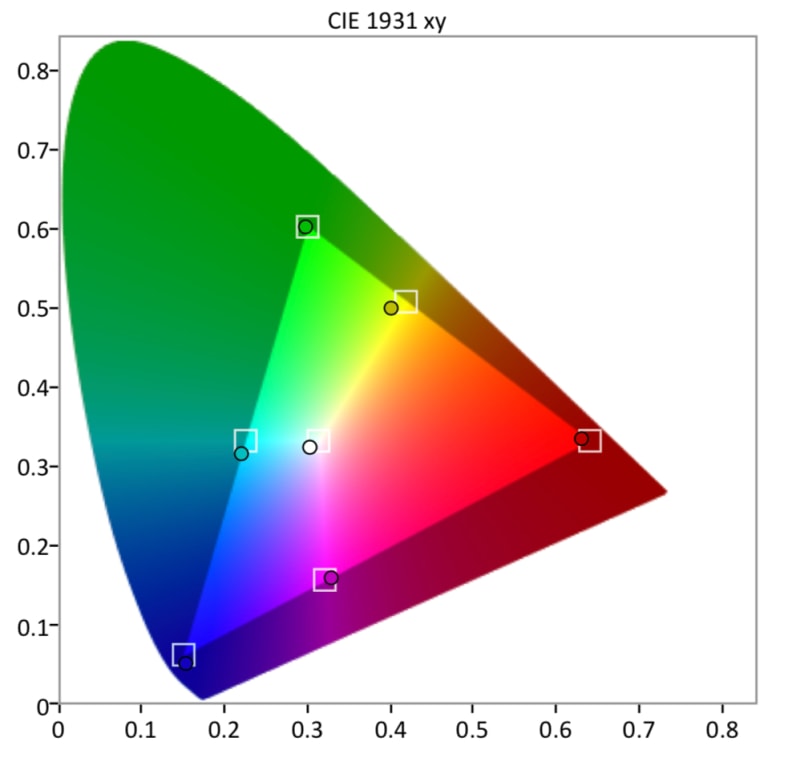
CalMan Charts - HDR
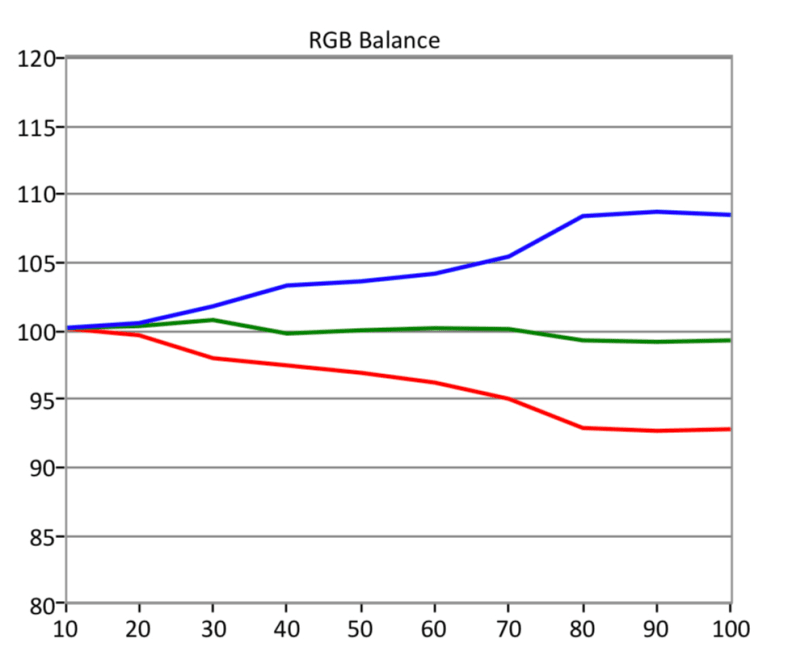
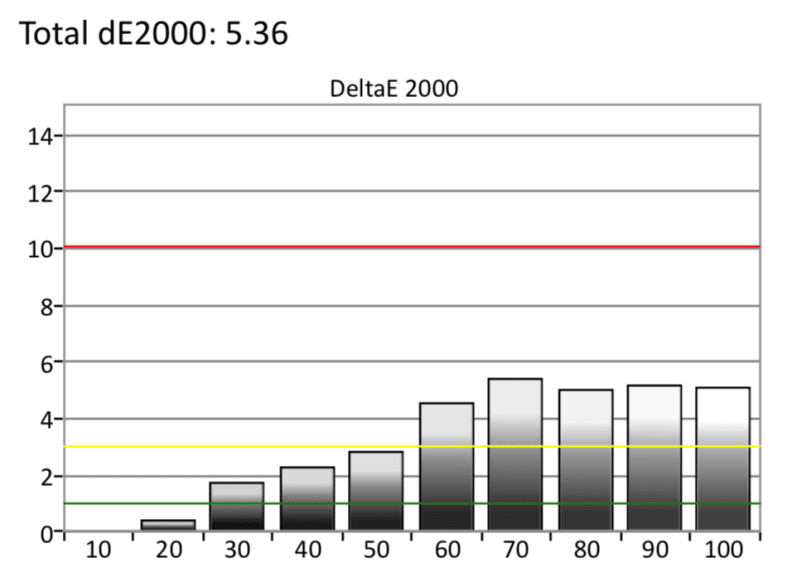
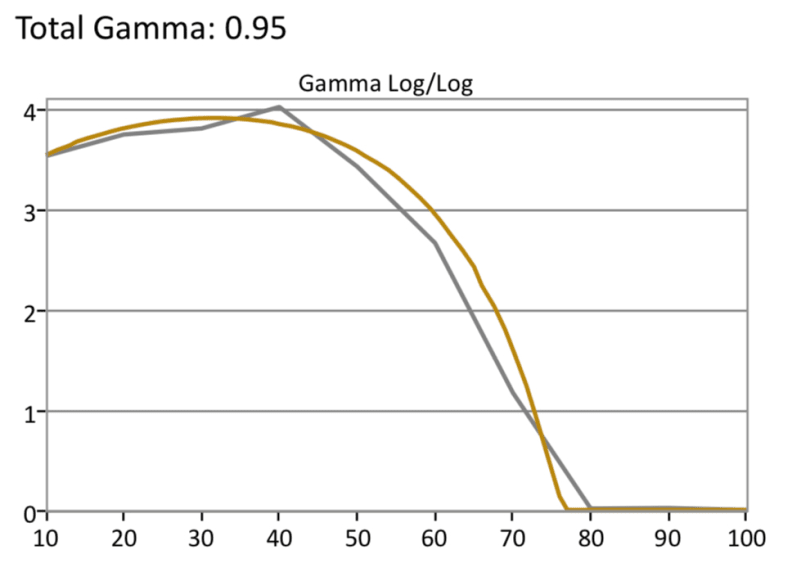
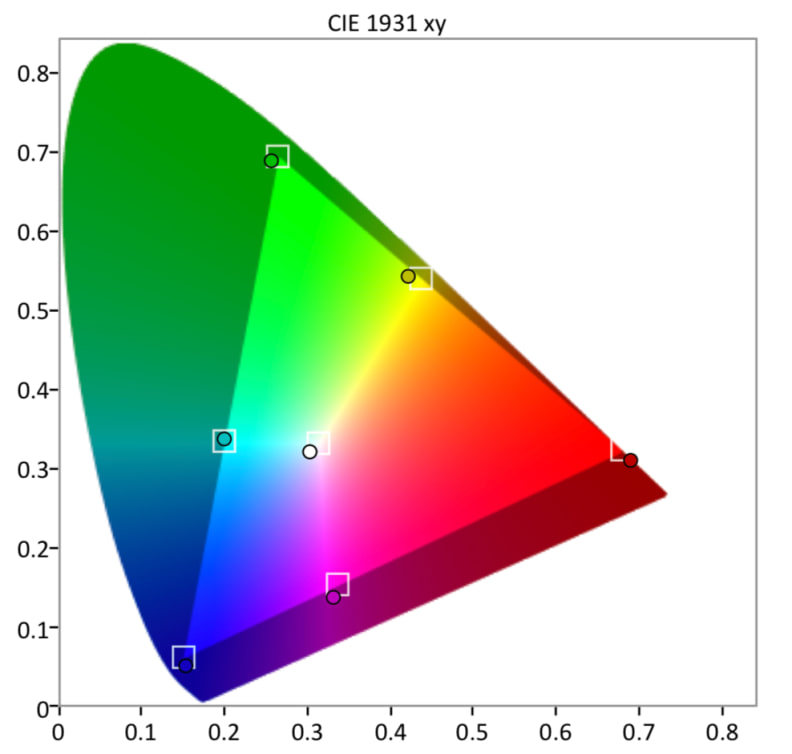
Meet the tester
Lee was Reviewed's point person for most television and home theater products from 2012 until early 2022. Lee received Level II certification in TV calibration from the Imaging Science Foundation in 2013. As Editor of the Home Theater vertical, Lee oversaw reviews of TVs, monitors, soundbars, and Bluetooth speakers. He also reviewed headphones, and has a background in music performance.
Checking our work.
Our team is here to help you buy the best stuff and love what you own. Our writers, editors, and experts obsess over the products we cover to make sure you're confident and satisfied. Have a different opinion about something we recommend? Email us and we'll compare notes.
Shoot us an email


